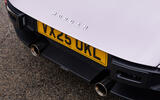Morgan Supersport review
Plus Six replacement arrives with the company hoping owners will think of it as the second, not third, car in a garage

Published:
15 April 2025
- Introduction
- Design & styling
- Interior
- Engines & performance
- Ride & handling
- MPG & running costs
- Verdict
Find a car reviewMakeAbarthAC CarsAC SchnitzerAehraAircraft carrierAiwaysAlfa RomeoAllardAlpinaAlpineAnalogue AutomotiveArielAscariAston MartinAudiBACBentleyBeyonCaBizzarriniBMWBorgwardBowlerBrabusBristolBrookeBugattiBYDBytonCadillacCallawayCampagnaCaparoCaterhamCatonChangan AutoChevroletChryslerCitroenCooper (2001-2006)CupraDaciaDaewooDaihatsuDallaraDavid BrownDe TomasoDeLoreanDenzaDodgeDonkervoortDSDysonEagleElectrogenicElementalElfinEternitiFarbioFerrariFiatFiskerFordGBSGeelyGenesisGinettaGMCGordon Murray AutomotiveGreat British Sports CarsGreat WallGT LE50GTO EngineeringGumpertGunther WerksGWMHennesseyHiPhiHispano SuizaHoldenHondaHongqiHuman HorizonsHummerHyundaiIFRIneosInfinitiInvictaIsuzuItalDesignIvecoJaecooJaguarJannarellyJCBJeepJIAKamm ManufakturKen OkuyamaKGMKiaKimeraKingsley CarsKoenigseggKTMLadaLamborghiniLanciaLand RoverLeading EdgeLeapmotorLEVCLexusLightyearLincolnLMCLotusLucidLynk & CoMahindraMarcosMarlinMaseratiMastrettaMaxusMaybachMazdaMcLarenMercedes-AMGMercedes-BenzMercedes-MaybachMG MotorMiaMicroMikaMiniMitsubishiMitsuokaMK SportscarsMobilizeMorganMS-RTMSTMunroMurrayNextEVNioNissanNobleOldsmobileOmodaOpelPaganiPaul StephensPembleton Motor CompanyPeroduaPeugeotPininfarinaPolarisPolestarPorschePragaProdriveProtonQorosRadfordRadicalRamRed BullRenaultRevologyRevolutionRimacRiversimpleRivianRMLRodinRoeweRolls-RoyceRoverRS6 GTRufSaabSaturnScoutSeatSenovaShelbySilenceSinSkodaSkywellSmartSmit OlethaSpartan Motor CompanySpykerSRTSsangyongSSCSubaruSuperformanceSuzukiTataTeslaTheon DesignTigerTolmanToniqTouring SuperleggeraToyotaTriumphTushekTVRTwistedUniqueVauxhallVencerVeritasVinfastVolkswagenVolvoVoyahVuhlWellsWestfieldWiesmannXiaomiXpengYangwangZeal MotorZeekrZenosZenvoZolfeZoyteModel
- Introduction
- Design & styling
- Interior
- Engines & performance
- Ride & handling
- MPG & running costs
- Verdict
Find Morgan Supersport deals
Other Services

https://youtube.com/watch?v=7Zb_JY4UhaU%3Fsi%3DEJtcG1fCD4liHZ1y%26enablejsapi%3D1%26origin%3Dhttps%253A%252F%252Fwww.autocar.co.uk
The Supersport is the Morgan they think could go from being the third car in your garage to the second one.
Instead of owners having a daily driver, something more special for semi-regular amusement and a Morgan for high days and holidays, the new Supersport, the company reckons, could fill the second slot – in place (this sounds ambitious) of something like a Porsche 911.
Initially Morgan’s engineers only meant to update the Plus Six, their straight-six roadster. But this facelift/update/call it what you will took on a life so large that it yielded a new name, a new appearance, even a new chassis derivation: CXV (115 – Morgan’s age last year) replacing CX (110). That has even necessitated homologating and crashing it again.
Perhaps helpfully, it positions the Supersport further from the Plus Four, the traditional shape and style and still the meat of Morgan’s menu.
https://www.drivenbuy.co.uk/autocar?car_make=morgan&car_model=supersport&review=new&source=https://www.autocar.co.uk/car-review/morgan/supersport
Verdict

Model tested:
Rating:
Morgan Supersport
Plus Six replacement has excellent chassis control, predictable handling and a dose of practicality – but still feels just like a Morgan.
Good
Feels beautifully put together
Involving and engaging handling
Bad
Ticky engine at low speeds
Refinement lower than normal ‘second car’ standards
DESIGN & STYLING
Pros
Beautifully put together body
That rear window gives amazing visibility
Cons
Chassis still won’t be as rigid as something mass-produced
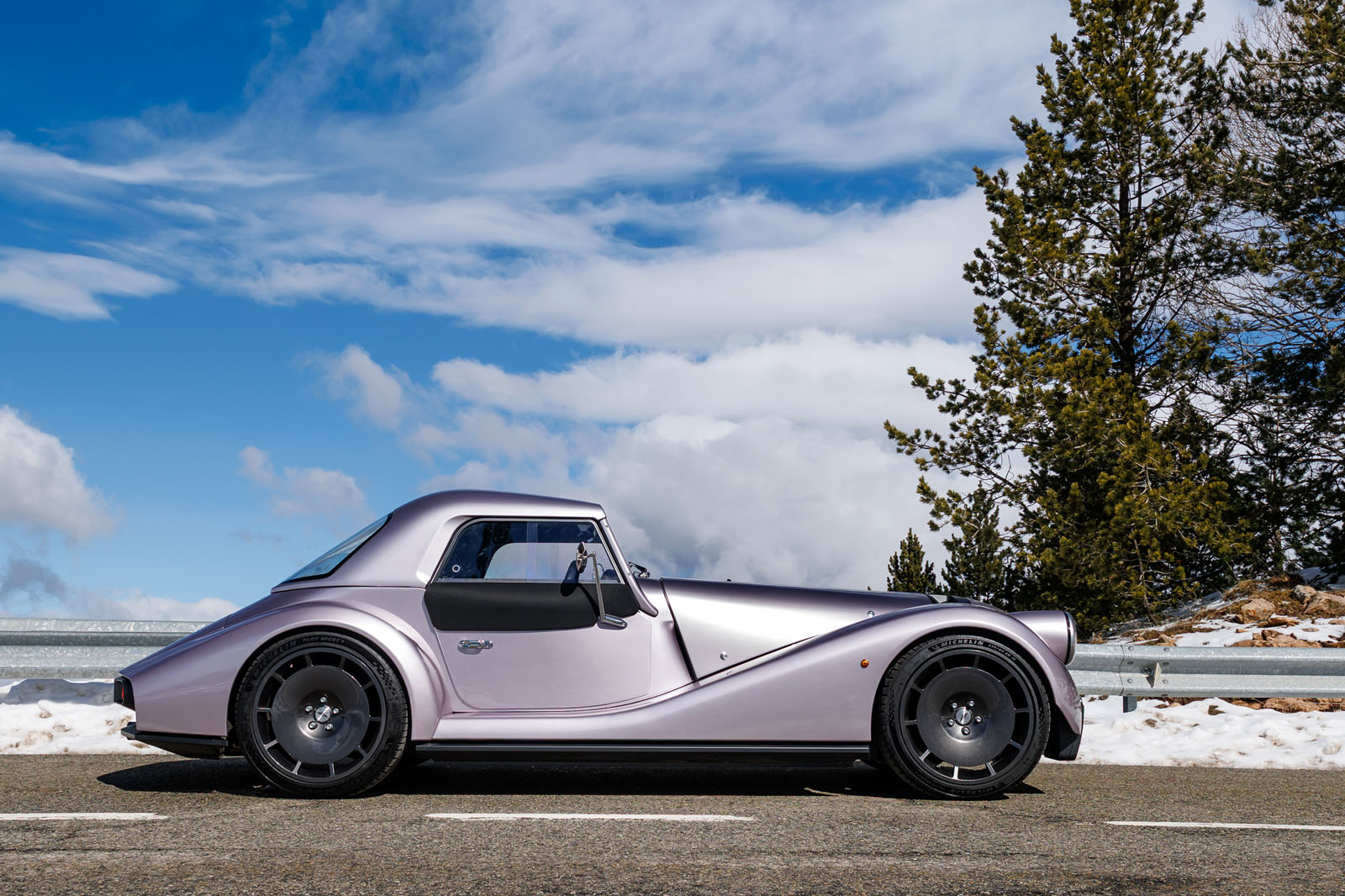
The Supersport’s chassis is still bonded aluminium, weighing just 83kg, with reshaped sills and a strengthened transmission tunnel, increasing torsional rigidity by 10% over the Plus Six. If you fit the composite (20kg) hard top, it increases by 10% again.
Stronger braces attach the front and rear subframes, to which double wishbones and anti-roll bars are mounted both ends. Optionally (and as fitted to our test car), Nitron adjustable dampers are available. The steering rack is the same as the Plus Six’s, but repositioning it has increased its speed by 13%, it’s claimed to be more linearly responsive and removing two universal joints has reduced friction.
The body is handcrafted aluminium but the look is new: a blend of the classic and technical/functional, a language first introduced on the Super 3.
As per traditional Mogs, there’s still an ash frame to support the body, visible when you open the bonnet or boot – for there is now a boot, which can hold newly designed door uppers, that clip in and out supremely easily, should you want to run with half doors.
INTERIOR
Pros
Really atmospheric and well finished
Simple switchgear
A great view out
Cons
Some draughts and wind noise
Quite narrow seats; make sure you fit
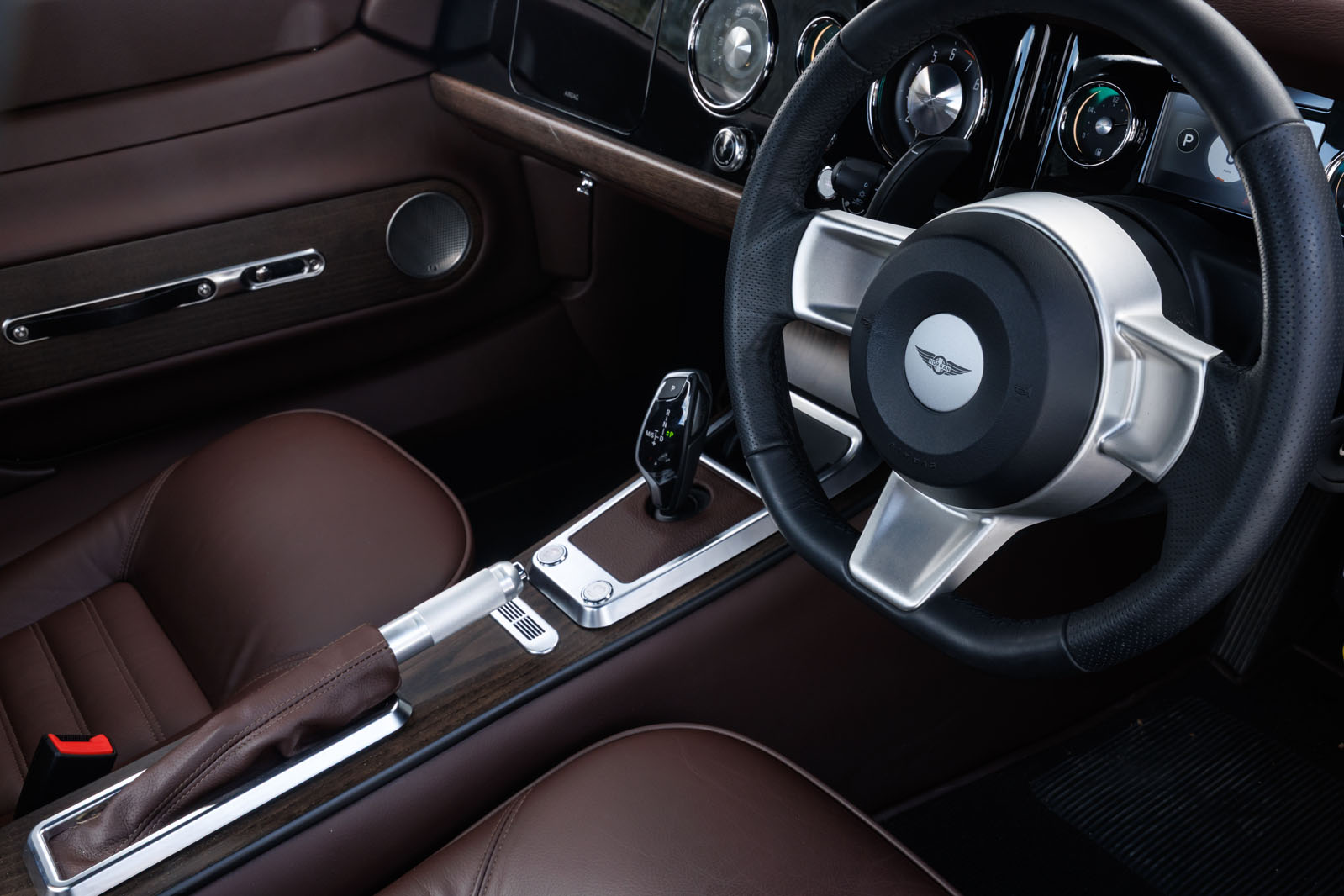
The kerb weight is 1170kg, distributed 50:50 front to rear. That shifts a per cent or two rearwards when somebody drops themselves aboard the snug interior, because you sit closer to the back than the front and this isn’t a large car, at 4.1m long by 1.8m across the whole body, and the inboard cabin design means that’s narrower again.
The seats are smallish, then, and the view through the letterbox windscreen across the long bonnet and headlight cowls, via three diddy wipers, is extremely atmospheric.
Perceived material quality is higher than perhaps ever in a Morgan. For perfect fit and finish, the truth is there’s no beating a mass-produced car these days, but the BMW-sourced wheel has a pleasing aluminium insert and the minimal switchgear is intuitive.
The compact interior dimensions and quirkiness are the first indications that this is still a Morgan and that, as a result, you would want to be forewarned before swapping your Mercedes or Porsche for one. The seats give occasional material squeaks – not unpleasant – and there’s a fair degree of wind noise, as is inevitable with exterior lumps and sliding acrylic side windows.
ENGINES & PERFORMANCE
Pros
It’s really, really fast
Because it weighs so little, it’s very efficient too
Makes a pleasing noise at higher revs
Cons
You can hear the injectors tick at low speed
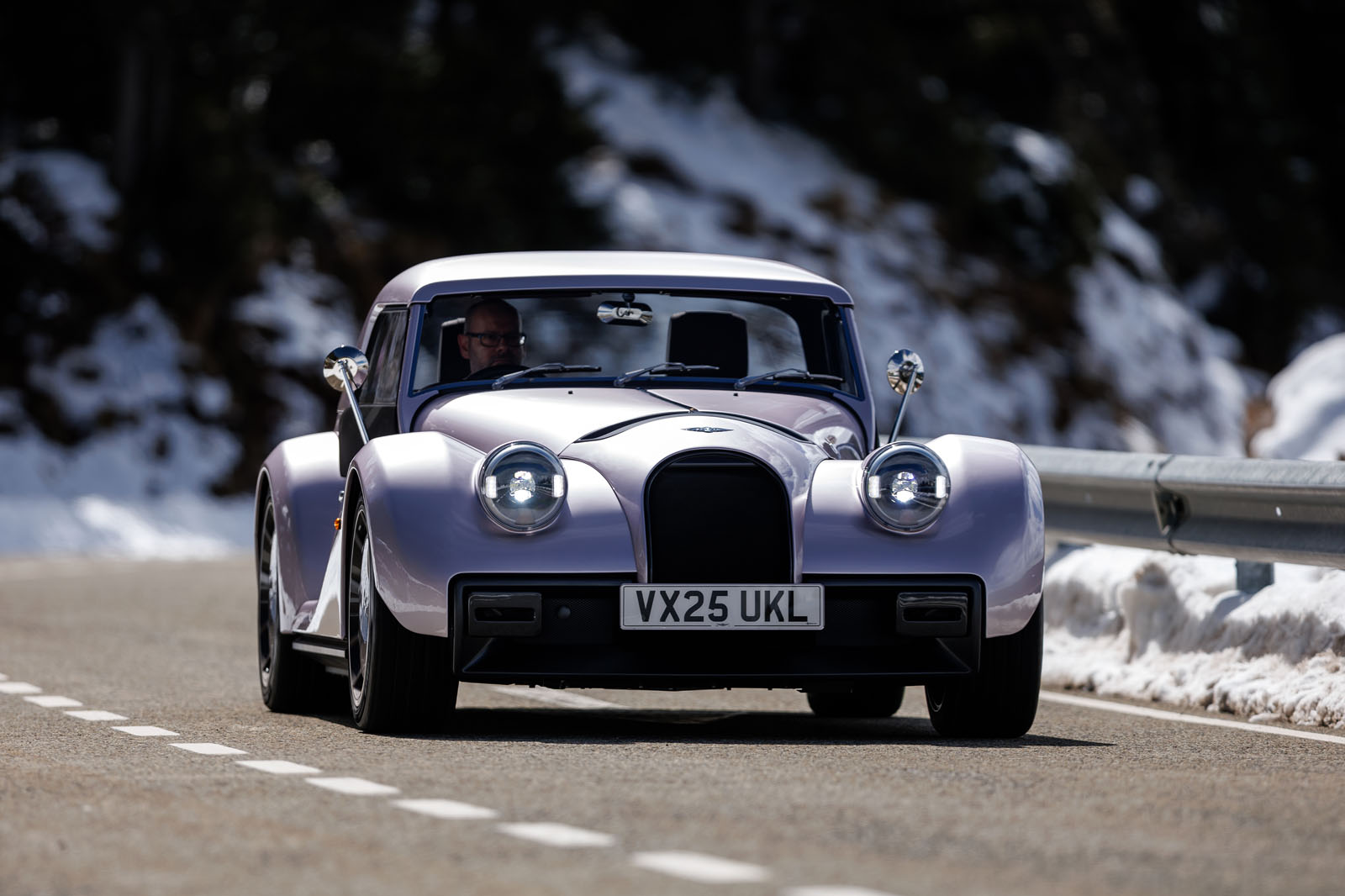
The engine remains, as it was in the Plus Six, BMW’s twin-scroll-turbocharged 3.0-litre petrol straight six, the ‘B58’.
It makes 335bhp at 6500rpm and 369lb ft of torque at 1250rpm, driving the back wheels through an eight-speed automatic transmission and an optional limited-slip differential (not fitted to our validation prototype test car).
At low revs, notable injector ticking noises, like a dozen sewing machines, are another indication that this isn’t the world’s most refined roadster.
But as revs and speed rise, the sound takes on a more fulsome vroom and it goes very, very fast (the claimed 0-62mph time of around 4sec feels about right).
The eight-speed automatic shifts really cleanly, as expected of this ’box. Brake feel is positive, too.
It all augurs well for driving fun and, as we will see, the Supersport’s chassis is capable like no Morgan’s before it too.
RIDE & HANDLING
Pros
Linear steering
Excellent chassis deftness
Cons
ESP can kick in early
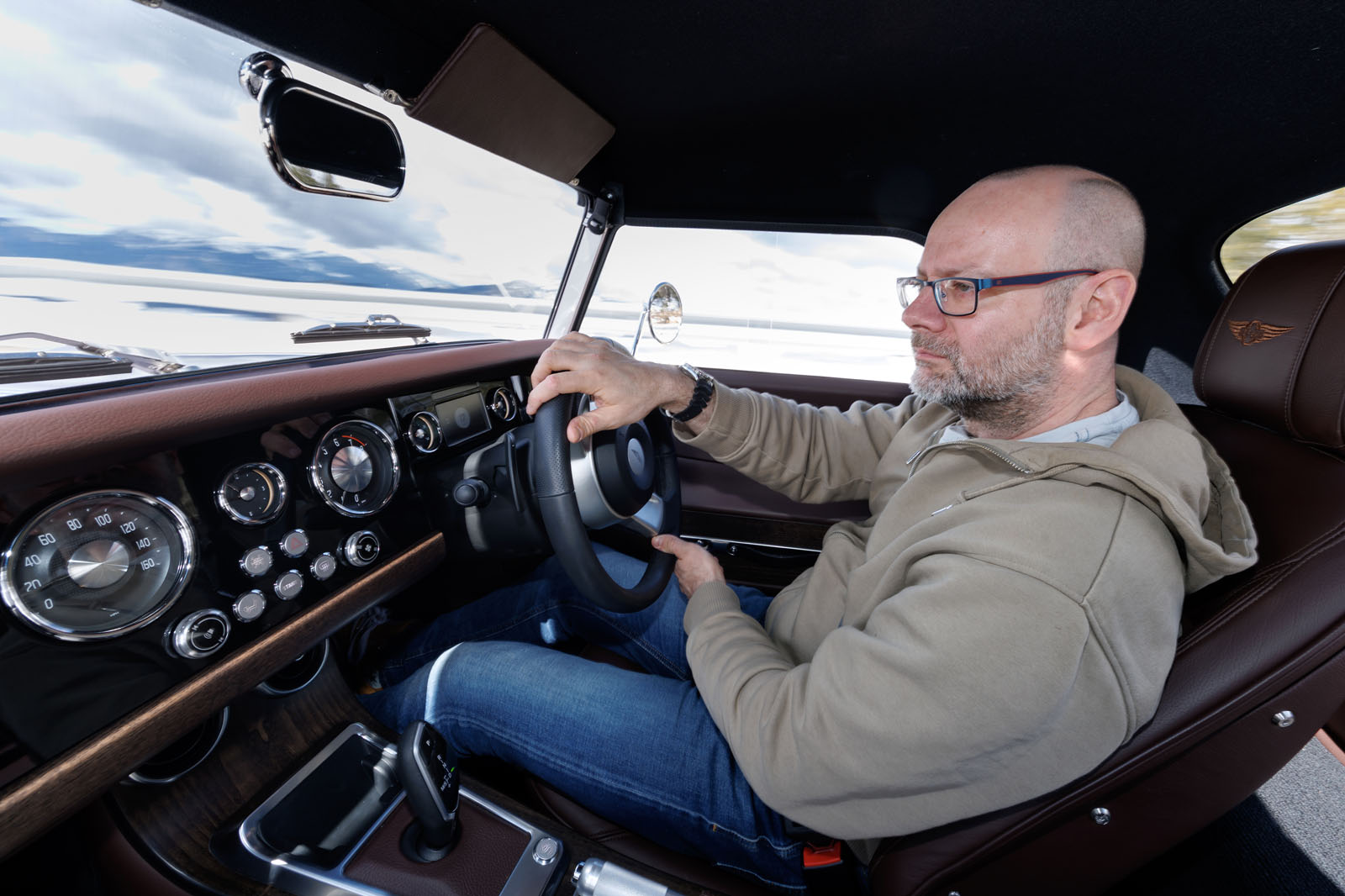
For all the talk of this car moving up a class in terms of capability and refinement, it’s still a Morgan, do understand.
So it turns quickly and you feel like you’re sitting closer to the back of it than the middle, with the bonnet and the front wheels stretched out ahead. It’s a bit GT-like in that respect.
But importantly there’s more predictability and linearity of response than ever, particularly to the steering. Early Morgans on an aluminium architecture had not a lot of steering response at first and then loads all at once. Things have improved over the years, but this is now a truly linearly responsive, communicative, trustworthy steering set-up.
Additional bump-stop travel and anti-squat geometry mean there’s a genuine dexterity to the Supersport’s ride and handling like there hasn’t been in any previous Morgan too.
On one stretch of especially cambered, twisting and lumpy back road it reminded me a little of an Ariel Nomad, albeit less extreme, with gentle body movements and good ride isolation disguising what must be very deft wheel control.
MPG & RUNNING COSTS
Pros
Should hold its value extremely well
Good fuel economy
Cons
Expensive to buy, but there are paybacks later

The Supersport is a relatively expensive sports car to buy new at a little over £100,000, at least until you remember that basically everything costs shedloads these days.
It’s also worth noting that Morgans, because they’re desirable and built in such small numbers – maybe 150-200 a year – hold their value extremely well.
The ‘B58’ engine here has a combined fuel consumption of 36.8mpg, and in our experience it’s easy to do rather better than that on a cruise.
VERDICT
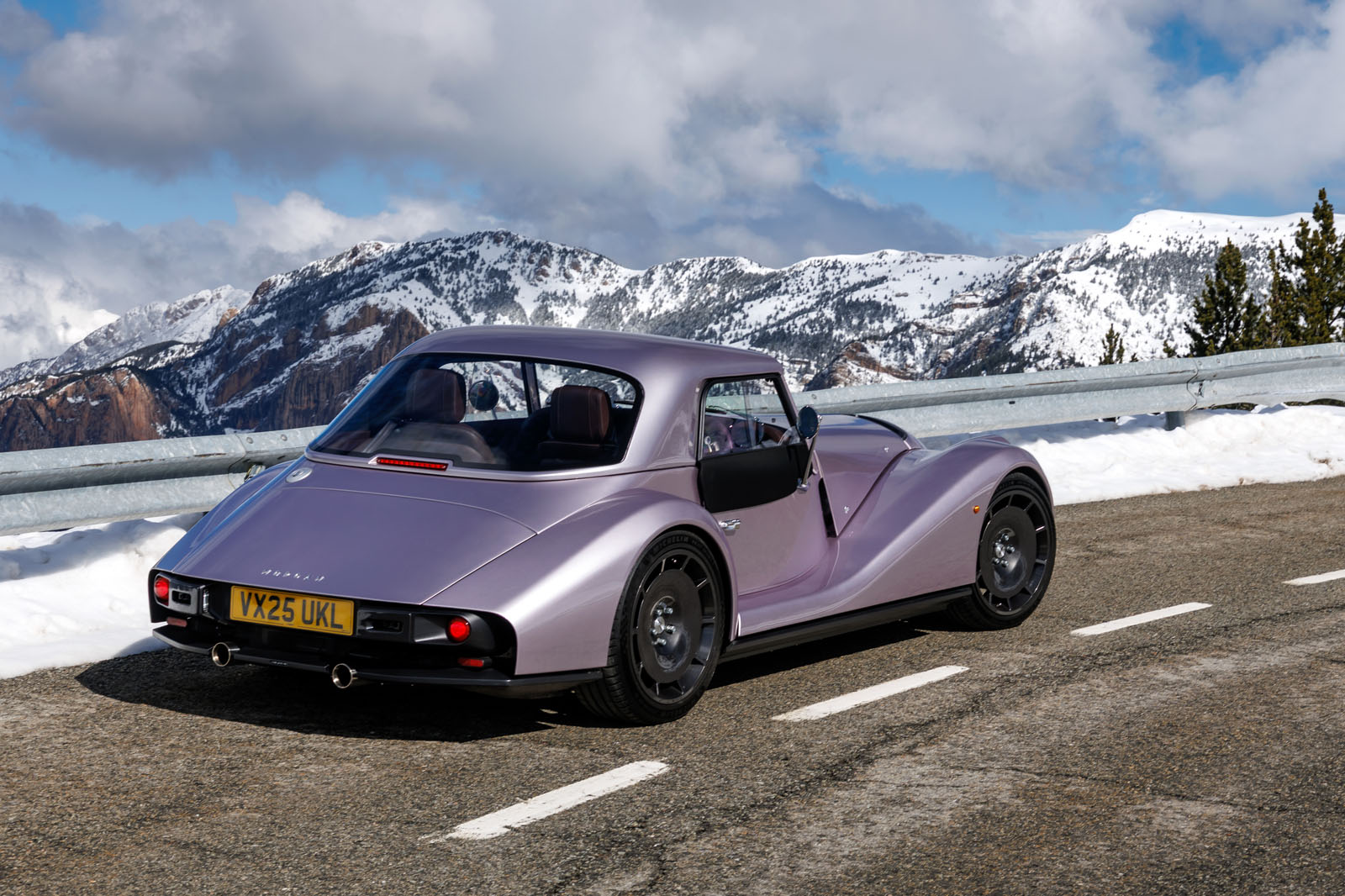
Verdict

Model tested:
Rating:
Morgan Supersport
Plus Six replacement has excellent chassis control, predictable handling and a dose of practicality – but still feels just like a Morgan.
Good
Feels beautifully put together
Involving and engaging handling
Bad
Ticky engine at low speeds
Refinement lower than normal ‘second car’ standards
Morgan has taken all of the things that the Plus Six was and moved them on considerably.
Whatever you think of it, its appearance has moved itself up and away from the existing Plus Four, extending the Morgan range usefully.
In terms of performance and ride and handling, too, particularly in terms of its linearity of responses, it’s in a different league to other Mogs.
Ultimately, though, it still feels like a Morgan in the way it drives: you get the sensational view out, you sit near the back and it’s a compact, lightweight, engaging sports car with some unrefinements.
One suspects that on a wet motorway, in the dark, in November, a 911 or Mercedes-AMG SL would still feel safer, warmer, more secure. But on the right road, on the right day, the Supersport is utterly compelling.






